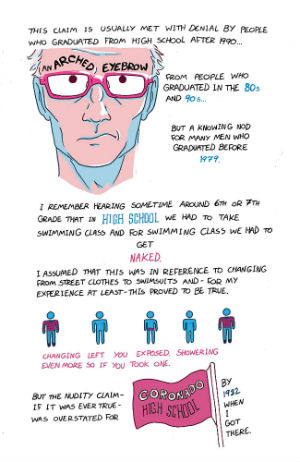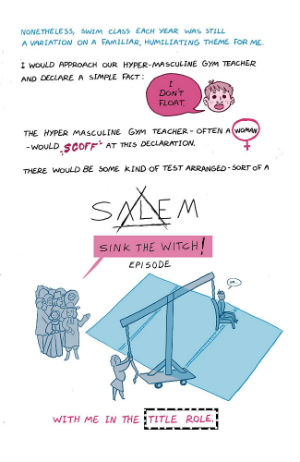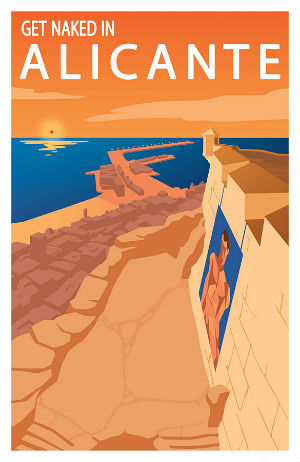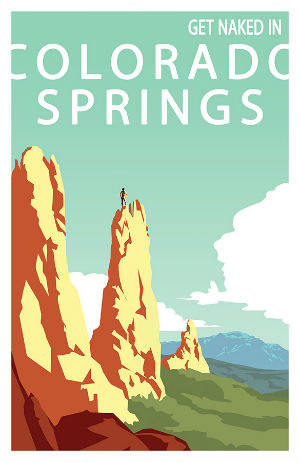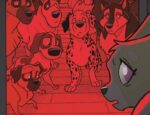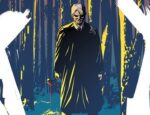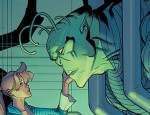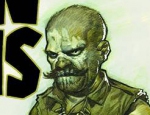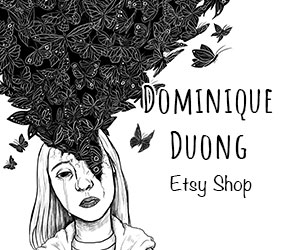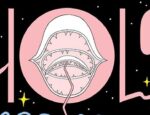For all his success in mainstream comics and, subsequently, animation (as one of the creators of Ben 10), the comics work I’ll always associate with Steven T. Seagle is It’s a Bird…, an unusual autobiographical hardback published by Vertigo back in 2004. A collaboration with Danish artist Teddy Kristiansen, It’s a Bird… looked at the difficulties Seagle faced while getting to grips with writing the almost invulnerable Superman, particularly given the presence of a horrible inherited condition in his family history.
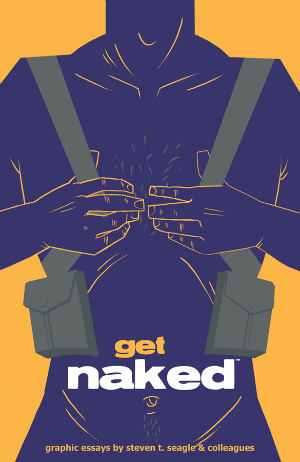 Get Naked marks a return to non-fiction comics, in the form of 19 short “essays”, each executed with a different artist, on the issue of nudity. More specifically, without a trace of prurience, they trace Seagle’s progression from a paralysing horror at the thought of being naked around other people to an altogether more balanced and healthy attitude towards being how nature intended.
Get Naked marks a return to non-fiction comics, in the form of 19 short “essays”, each executed with a different artist, on the issue of nudity. More specifically, without a trace of prurience, they trace Seagle’s progression from a paralysing horror at the thought of being naked around other people to an altogether more balanced and healthy attitude towards being how nature intended.
In his introductory essay, ‘Backward’ (with Danish artist Mads Ellagord Skorbakkie), he puts his initial inhibitions in the context of the “culture of bodyshame and ever more repressed sexuality” in the US, where an increasingly institutionalised aversion to going skyclad has left the population “like recovering nude-aholics on a decades-long textile adherence program”.
Three episodes in particular trace the evolution of his attitude: in ‘Alicante’ (as illustrated in a slightly distracting anthropomorphic style by Rebekka Davidsen Hestbæk), a post-convention game of football fills him with dread over the thought of communal changing and showering. However, taking his lead from his fellow players, he soon realises that for all his self-defined physical flaws, no-one is thinking of him as anything other than one of the team.
Later, in the book’s core chapter (illustrated by Andrada Aurora Hansen), a trip to a spa in the South Korean capital, Seoul, forms part of a more profound process. As he strikes out on his own from a tightly organised itinerary, the act of shedding his clothing – and his self-conscious inhibitions – becomes the climax of a personal odyssey. Having stripped away the various burdens of modern life and self-image, “A lifetime of worry and panic… was erased in less than three minutes.”
Art by Fred Tornager
The transformative experience leads Seagle to some blunt and startling conclusions about the way the prevailing American culture had conditioned him – and countless millions like him – to view the body and what it represents.
Finally, in laying out his general admiration for the good folk of Denmark (the third-happiest in the world, according to the UN’s latest World Happiness Report), he highlights – with Cecile “Q” Maintz Thorsen – the positive consequences of a way of life in which children are taught from an early age to be comfortable with nudity. Being around family members of all genders and ages dispels any sense of shame or mystery, creating a “lifelong awareness [that] curbs a lot of the anxiety about bodies and the way they evolve”.
Chapter heading art by Emei Olivia Burell
Nudity plays a more peripheral or metaphorical role in most of the other stories, which are either entertainly told traveller’s tales (from destinations as diverse as Tokyo and Tallinn) or ruminations on the passage of time and the changes it visits on us (as Seagle returns to live in LA and recalls growing up in and around the city).
The nature of these stories means that they often take the form of illustrated text as much as “pure” comics, and the more successful pieces manage the balance well, picking up the tone of the piece and providing an almost musical accompaniment. The illustration takes a number of forms, from the classic visual grammar of comics to a more design-led typographic treatment and a cut-and-paste punky zine style.
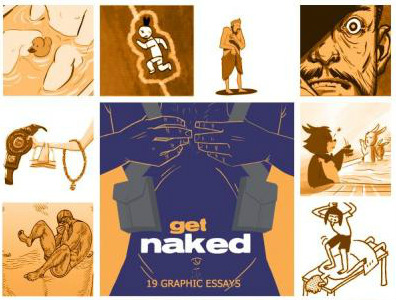 Where they’re less successful is when the irony or tension between the text and image goes too far: for instance, in Seagle’s tale of travel misfortune in and around the Czech spa city of Karlovy Vary, Bob Lundgreen Kristiansen’s overcooked ‘horror’ interpretation of events strikes a bit of a discordant note, as atmospheric and strongly executed as it is.
Where they’re less successful is when the irony or tension between the text and image goes too far: for instance, in Seagle’s tale of travel misfortune in and around the Czech spa city of Karlovy Vary, Bob Lundgreen Kristiansen’s overcooked ‘horror’ interpretation of events strikes a bit of a discordant note, as atmospheric and strongly executed as it is.
This is a welcome grab-bag of a book that entertains, provokes thought and highlights a number of emerging artistic talents. Seagle is a mature and confident raconteur, and he uses the essay form well. And if the connection with his central thesis sometimes seems a little stretched, there’s still plenty of pleasure to be had in his company (and that of his collaborators).
Steven T Seagle (W), Various (A) • Image Comics, $24.99
Review by Tom Murphy





